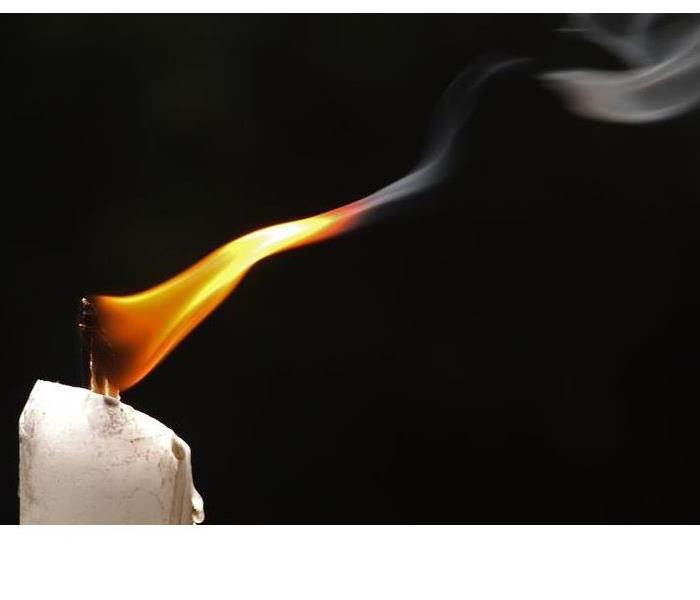Candle Burning Safety
6/10/2019 (Permalink)
How many house fires are caused by candles in the U.S. each year?
Candles cause an estimated 15,600 house fires, 150 deaths, and 1,270 injuries each year.
Why are candles so dangerous?
A candle flame may be small, but you should treat it as you would any other flame – with care. Candles turn to liquid in order to release their fragrance and this wax carries heat and that can cause another surface, such as a wood table, to catch fire. Over half of candle fires start because the candle is too close to combustible materials.
What is one of the common factors in fatal candle fires?
More than half of all candle fires start when something that can burn, is combustible, such as furniture, bedding, mattresses, curtains, or decorations are too close to the candle flame. One-fifth or 20% of these fires are candles unattented or abandoned.
When do these fires occur?
The majority of candle fires and fire deaths occur during the month of December between the hours of midnight and 6:00 a.m.
What is the safest way to use candles?
• Always burn candles in a suitable glass or metal container. Containers should not tip easily.
• Keep candles at least 12 inches away from anything than can burn.
• Clean and trim candlewicks to 1/8 or ¼ inch before lighting.
• Do not burn candles all the way down to the bottom.
• Keep candles where children and pets can’t reach them. A pet, such as a cat, can jump up and knock over the candle or knock over something into the candle.
• Keep candles out of windy or drafty areas and away from anything that can easily catch fire (for example, furniture, curtains, carpet, or newspapers). So often, a curtain blows into a candle, something falls on it, or the candle burn downs and ignites nearby combustibles
• Always place candles on a heat-resistant surface. Small candles such as tea lights can melt plastic surfaces, such as the top of a TV and the side of a bath tub. • Always place candles on an uncluttered surface.
• Candles should not be used during a power outage. Flashlights and other battery powered lights are safer options.
• Always put the candle out when leaving a room or going to sleep. Use a special candle snuffer or candle quencher. Do not use fingers or blow them out. Blowing them out can send sparks and hot wax flying





 24/7 Emergency Service
24/7 Emergency Service
